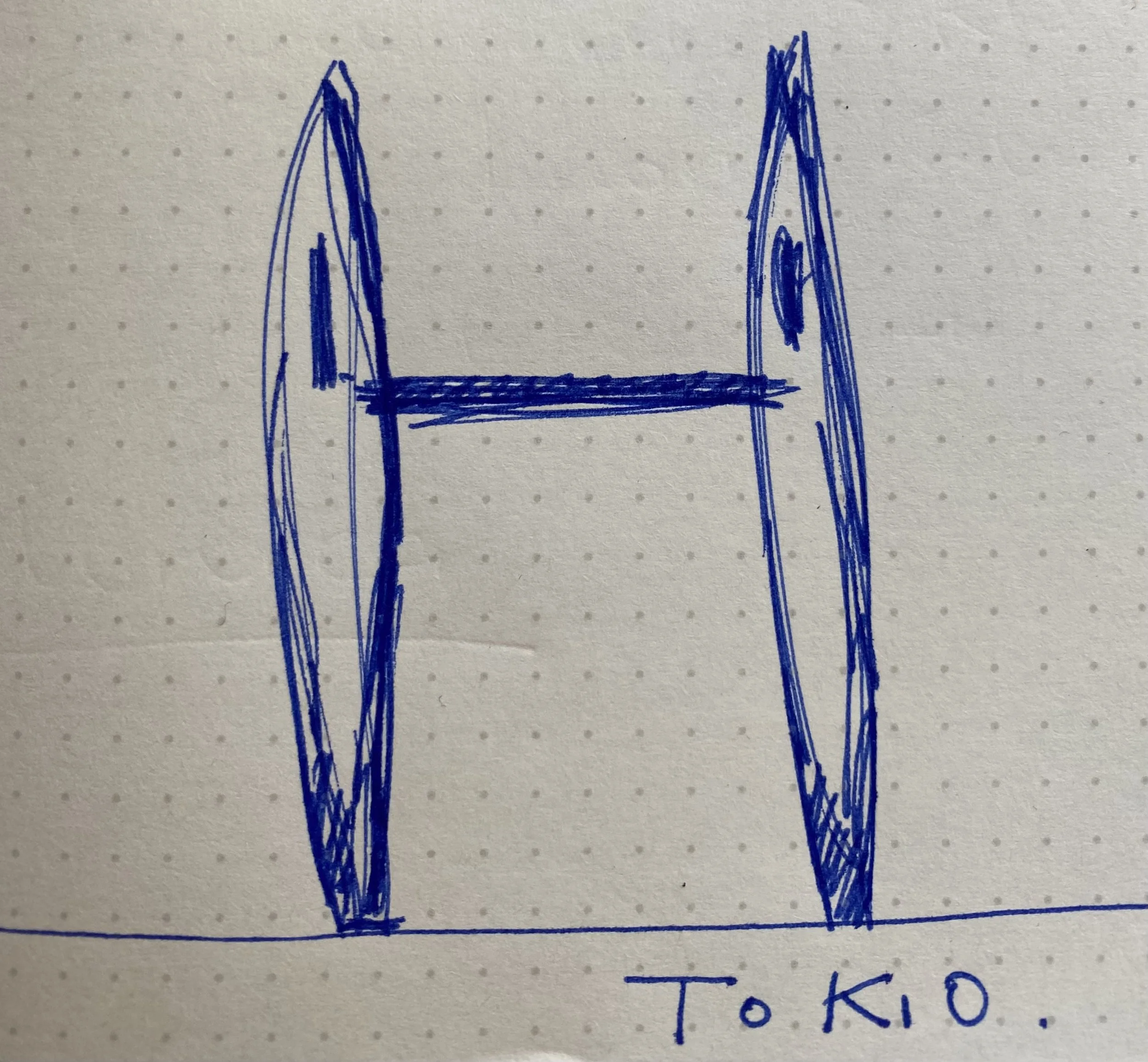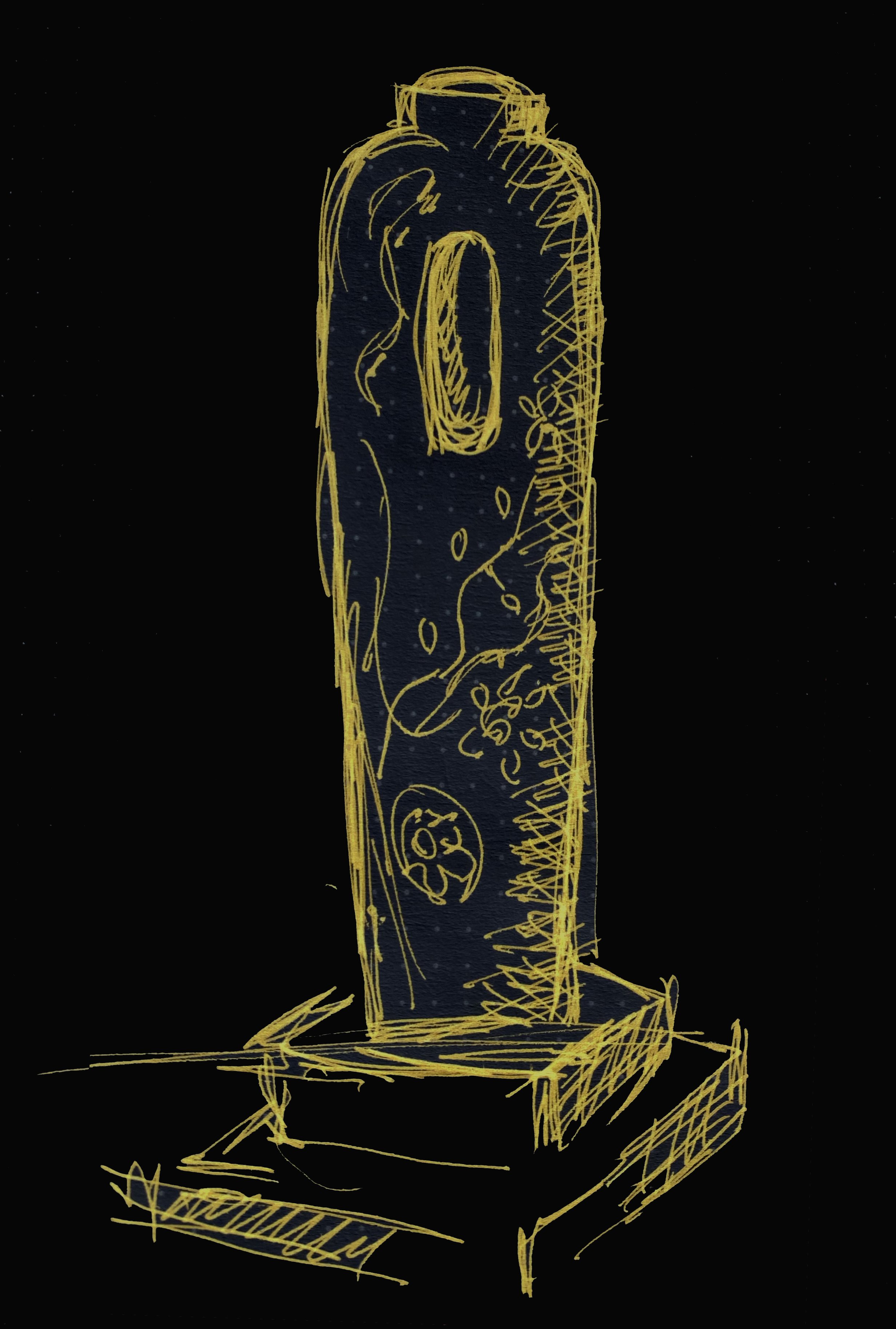A Global Art Project
Coser la Tierra (Sewing the Earth) is a global art project that explores the relationship between humanity and the planet through the symbolic act of sewing. Using the needle as a metaphor for connection, healing, and transformation, the project traces a path along the 40th parallel, uniting diverse cultures and landscapes. Through largescale installations, performances, and workshops, Coser la Tierra invites us to reflect on how we can mend the fractures—both physical and emotional—between ourselves, one another, and the Earth.
The Needle, A Tool of Survival and Symbolism
The needle has been an essential instrument of human ingenuity since prehistoric times—an extension of the hand that transformed necessity into art.
First carved from bone or ivory, it enabled the shaping of raw materials into functional forms—shelter, garments for protection, and adornments that expressed identity, beauty and power.
Across millennia and continents, its presence endures: in Mesopotamia and Egypt, where woven textiles marked wealth and trade; in the Americas, where embroidery held sacred meaning; in Africa, where threads carried stories of identity and kinship with the natural world; and along the Silk Road, where fabric, knowledge, and belief intertwined.
More than a tool, the needle is a witness to our collective history. Its silent labor binds the human story—stitch by stitch, thread by thread—joining generations in an unbroken seam of survival, expression, and connection.
The origins: Nuria Román & Latitud 40º
The concept of Coser La Terra (Sewing the Earth · Latitude 40°) reflects the artistic journey of Spanish artist Nuria Román since her arrival in Menorca in 1997. After several years of living in Los Angeles, she discovered on this Mediterranean island the ideal place to embrace her narrative — a landscape where material, territory, and environment intertwine. There felt grounded and was able to cultivate a practice rooted in this dialogue and in her enduring commitment to nature, society, and the ethical dimension of art.
These experiences marked an ongoing process of artistic exploration and experimentation that has carried her across diverse disciplines and beyond conventional circuits and categorizations, positioning her within the expanded field of contextual and collective art, in which the community and its surroundings are as integral as the artist in shaping the work.
Román conceives art as a space for encounter, reflection, and transformation—where the needle, a symbol of repair and dialogue, becomes a poetic instrument for connection, stitching together landscapes, communities, and shared memories.
The Begining: Menorca, Spain
Coser la Tierra was born in Menorca — a land sculpted by the passage of civilizations, where history and nature unfold in quiet harmony. Its ancient Talayotic settlements and the legend of Talatí de Dalt speak of a timeless dialogue between humanity and the earth, between gesture and ground.
As a UNESCO Biosphere Reserve, Menorca stands as a living testament to balance and preservation, where culture and environment intertwine. Within this landscape of respect and coexistence, Román found the ideal ground to begin this project — the origin point for her practice, which seeks to unite, heal, and reconnect through the symbolic act of sewing.
The Act of
Sewing
Sewing has long been central to cultural exchange, social ritual, and the shaping of identity. More than the joining of fabric, it is the weaving of narratives—stories of creativity, endurance, and community. Through the rhythmic act of stitching, materials are transformed, imagination is kindled, and memory is preserved.
Historically, sewing has offered both sustenance and self-expression, serving as a quiet form of empowerment—particularly for women—whose labor, skill, and artistry often spoke where words could not. From mythic figures such as Arachne, Penelope, Ariadne, and Philomela, sewing emerges as a symbol of storytelling and perseverance. Across cultures, it has acted as a language of transmission, through which knowledge, emotion, and tradition are passed from hand to hand, generation to generation, interlaced within every thread.
Beyond its practical role, sewing endures as a gesture of patience and renewal. A single thread may be fragile, yet when woven with others, it gains strength—like the human connections that bind and sustain us.
Mending What Is Broken
Humanity has left deep scars upon the Earth—through war, borders, and the relentless pull of exploitation. Each rupture bears witness to a moment when division prevailed over unity, when the fabric of coexistence began to fray.
Yet, just as we have torn it apart, we also hold the power to mend. The act of healing—like stitching together a tattered cloth—requires care, patience, and intention. To mend the planet is to restore the soil’s fertility, rethread ecosystems with life, and reweave the delicate balance between humans and nature.
In every gesture of repair lies an acknowledgment of responsibility, and a quiet hope that what has been broken might be made whole again.
The thread: Latitude 40°
A Global Path of Connection
Tracing the 40th parallel, this project follows an invisible line encircling the planet—a path of unity that weaves together diverse cultures, histories, and landscapes.
Beginning in Menorca, it extends through Italy, Greece, Anatolia, Samarkand, Beijing, Korea, Japan, California, Utah, New York, Portugal, and Madrid before returning to Menorca.
Along this shared latitude, East and West meet once more, and the thread becomes both map and metaphor—a reminder that beneath our borders and distances lies a common fabric, stitched by geography and sustained through human connection.
Upcoming
Through site-specific interventions, Coser La Tierra continues its passage across diverse landscapes, tracing the threads that connect nature, memory, and human presence. Each gesture reflects on the delicate balance between past and future, tradition and transformation—using symbolic materials from each place to weave a living dialogue between history and the present.
Note:
The images in this section are digital visualizations created for illustrative purposes only. Final installations will be realized in collaboration with local artists, artisans, and makers in each location.
Thessaloniki, Greece 2026
Part of the Latitude 40° Earth Project, this intervention in the marble mountains near Thessaloniki emerges as a needle of light and stone, linking the material that once shaped temples and democracies with today’s search for balance and renewal.
The installation transforms the ancient quarries into a landscape of reflection, where the traces of extraction become luminous paths —a gesture of reconciliation between humanity and the Earth.
Through light, matter, and silence, the work invites us to rediscover the dialogue between nature, memory, and creation, echoing the enduring spirit of Greek harmony and wisdom.
Beijing, China 2026
A temporary installation is proposed in one of Beijing’s art centers: a needle-shaped sculpture created in collaboration with local artists and artisans. The work reflects on the immense cultural value of porcelain in China’s history—a material whose secret was coveted by the West for centuries.
More than just an object, the needle symbolizes the interwoven relationships between civilizations, shaped by exchange, competition, and shifting power dynamics over time. Through this intervention, the project aims to create a space for dialogue that transcends historical divisions, inviting us to rethink our connections as humanity in a constantly evolving world.
New York, USA 2026/27
Nuria Román's residency in the Catskill marks a new phase of Sewing the Earth, Latitude 40º, exploring environmental fragility and our connection to nature through sculptural experiments with local materials like wood, clay, and ice. Incorporating wood from former Manhattan trees, the project establishes a symbolic link between the city's original landscape and its urban evolution, while a sculpture using Catskill wood recalls the historic transport of logs to build New York City.
Wooden Needle, the centerpiece of this phase, embodies connection, healing, and renewal, developed in collaboration with local artists and professionals. The work will culminate in a public presentation that deepens its cultural and environmental impact. Coinciding with the 250th anniversary of U.S. independence, this installation underscores the ongoing need to mend, rebuild, and unite.
Akita, Japan 2027
In Akita, a series of bamboo needles of varying sizes will rise in an organic pattern, symbolizing the human condition within a physical body that requires care and balance. These needles represent the connection between knowledge, tradition, and culture as essential elements of well-being.
In Japan, the health of the body and mind has always been a fundamental pillar of education and tradition. The choice of bamboo is no coincidence: this natural material, both strong and flexible, embodies the harmony between resilience and adaptability, emphasizing the importance of caring for and honoring our body as a temple.
Each needle will serve as a reminder of Japan’s ancestral wisdom: the care of oneself as an act of respect and continuity, where tradition and modernity converge in the pursuit of harmony.
Ani, Turkey 2027/28
This stone monument stands in the heart of the ruins of the ancient city of Ani, a historic settlement in the Anatolia region. The city, whose roots date back to the Hellenistic and Roman periods, was an important center of trade and culture, strategically located along key trade routes.
Excavations in the area have uncovered ceramics, inscriptions, and building remains indicating the presence of various civilizations, from the Hittites to the Byzantine Empire. The needle, with its imposing presence, remains an archaeological enigma, inviting visitors to imagine the grandeur of the city of Ani at its peak.
Naples, Italy 2027
Naples becomes a space to reflect on the North–South fracture, understood not as opposition but as a dialogue of values and differences that complement and enrich one another. The proposal invites us to rethink perspectives and to imagine a future where diversity becomes a source of balance, strength, and shared peace.
The project takes shape in a sculpture that unites Carrara marble (North) and volcanic stone from Vesuvius (South), reversing habitual dynamics and symbolizing that true strength arises from mutual acceptance. The work thus becomes a poetic gesture of reconciliation and peace, a universal metaphor of balance and unity in diversity.
Samarkand, Uzbekistan 2028
Along the ancient route of the Silk Road, near Samarkand, Uzbekistan, a monumental sculpture stands tall: a metal needle threaded with a vibrant fiber. This symbolic gesture marks the path that once gave rise to trade between East and West—a journey that has fostered both wealth and knowledge, yet also conflicts and divisions.
"Stitching the Earth" is a call for reflection. Just as the needle pierces through space to bring together scattered materials, we turn our gaze toward the need to mend the fractures of the past. More than a testament to trade and connection, this piece is an invitation to reconciliation, dialogue, and the weaving of a future built on respect, understanding, and balance.
Menorca, Spain 2029
The Needle of the Giantess is a sculptural project in development, proposing the creation of a monumental structure carved from piedra de marés, the native stone that has shaped Menorca’s landscape since ancient times. Its vertical form will reference Menorcan legends and the megalithic traditions of the Mediterranean, establishing a connection between land, sea, and sky.
The installation aims to integrate the sculpture within a site where geology, history, and culture intersect, engaging in dialogue with the island’s Talayotic heritage and identity. Conceived as a meeting point between nature and heritage, The Needle of the Giantess reflects on the concept of cultural landscape and human habitat, encouraging an approach to the territory based on coexistence and respect.
The project is being developed in collaboration with the Líthica Foundation, with the goal of linking Menorca’s material heritage with a contemporary perspective on art and the memory of the landscape.














